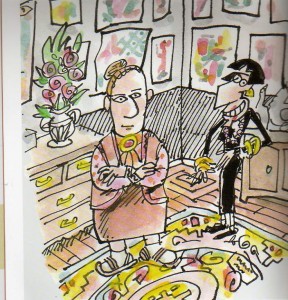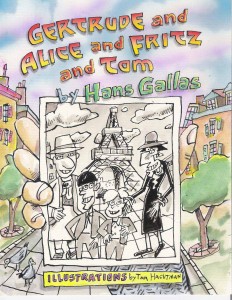OBSCENE CRITIC, OBSCENE ACADEMIC
![Kennicott[1]](http://quotinggertrudestein.com/wp-content/uploads/2012/01/Kennicott1-225x300.jpg)
Phil Kennicott, Washington Post critic of Stein
The Stein controversy was picked up by Scene4 Magazine, the international magazine for arts and media, in a special issue on Obscenity:
What Is Obscenity and What’s Not? An excellent article by the poet and Stein librettist Karren Alenier,
“The Obscene Critic,” takes up the notorious Stein attack by the Washington Post, which I also commented on in a previous
blog post. (The above caricature of the critic is by artist Gisela Züchner-Mogall.)
Alenier brings home the perversity of this particular Stein review — which inspired me to add the larger context to this public expression of “hatred” for Stein in a comment to Alenier’s article:
http://www.scene4.com/readersblog/
I have written extensively about the personal and historical complexities of Stein’s survival in Nazi-occupied France. (See my analysis in the
Los Angles Review of Books, in the
Women’s Media Center as well as in my
blog) Now it’s time to unmask the principal canon in the present “wars” against Stein: Barbara Will’s study
Unlikely Collaboration: Gertrude Stein, Bernard Faÿ, and the Vichy Dilemma (2011). Without the adademic seal of approval of this manipulative book, I argue, we would not have the extent of viciousness in today’s Stein controversy.
Before I enter my argument in this post, a brief introduction to the topic.
Obscene: 1.Offensive to accepted standards of decency or modesty. 2.Inciting lustful feelings; lewd. 3. Repulsive; disgusting. (Free Dictionary)
The joy of making Stein the butt of jokes and ridicule started the very moment she started, a good hundred years ago. We must assume Stein embodied so many offenses to “common decency” that she triggered a response in kind: 1) lewd -repulsed 2), disgusted- offended, and 3) morally outraged. Targets for the punches mostly were literally her belly, the body of the lesbian, the imposing dyke with the big self-esteem; and the Jewish self-declared “genius” whose writing was sheer “nonsense.”
Examples from the past: Stein was “a huge squat mountain on a distant border of the literary kingdom” (Time Magazine, 1933). French critic Marcel Brion described her writing as “a cold suet-roll of fabulously reptilian length… all fat, without nerve.” A “sausage, by-the-yard-variety“ according to Wyndham Lewis. She was “a clinical case in megalomania” (Tristan Tzara) and “her lack of modesty (made) her stubborn, as a caryatid would be had it eaten the house is was intended to support.” (Djuna Barnes). All this is repeated and summed up at present in comments by writer colleagues: for Cynthia Ozick, Stein’s most famous line, “A rose is a rose is a rose is a rose” is the “chant of a copycat Cubist” and “all that is left of Gertrude Stein.” (New York Times Magazine, 1996) Ex-feminist Elaine Showalter goes straight below the belt: “Stein seems more and more like the Empress Who Had No Clothes—a shocking sight to behold in every respect.” (A Jury of her Peers, 2009).
Stein’s present renaissance has triggered another old hat of hostility: questions about her survival in the French country-side during the Nazi-Occupation of France. As seasoned Stein expert Catharine R. Stimpson noted last November in her keynote address to the 2nd Annual Feminist Art History Conference in D.C.: “Stein’s detractors have been able to combine the standard attacks with a denunciation of her support of Vichy and Pétain.”
And now my Comment to the article in Scene4:
Karren Alenier’s article on the Washington Post’s obscene review of Gertrude Stein and the exhibition Seeing Gertrude Stein: Five Stories at the National Portrait Gallery in D.C. brilliantly analyzes one particular case of openly declared “hatred” for Stein. This sort of hatred has followed Stein from the moment she began to publish, in the early twentieth century, but it is worth noting the context that gave rise to this “indecent exposure” in a serious newspaper like the Washington Post. Stein’s present renaissance with two epochal traveling exhibitions has brought out people like critic Phil Kennicott who, as Alenier reminds us, assigns himself, a “seat in the corner with the Stein haters that include ‘the worst sort of critics—anti-Semites, misogynists, homophobes and philistines.’”
It is worth noticing that Stein’s old enemies found new fodder and an academic seal of approval for their attacks in Barbara Will’s book, Unlikely Collaboration: Gertrude Stein, Bernard Faÿ and the Vichy Dilemma (2011). The inflammatory book fed into the Stein controversy that was triggered by the exhibition Seeing Gertrude Stein: Five Stories at the Contemporary Jewish Museum in San Francisco, linked to the question how Stein and Toklas had managed to survive in Nazi-occupied France. Will’s speculations about the “true Stein” and her alleged “collaboration” with a fascist friend and fascist regime unleashed a cultural hysteria, a sort of license to kill that took over the media and blogosphere. I have no doubt that this cultural atmosphere provided the justification for the Washington Post to publish the infamous article.
Will camouflages the fact that her book is in fact about Bernard Faÿ, an intellectual friend of Steins’s from the twenties, a once respected historian and author who during the war became a Gestapo informer and persecutor of the Freemasons in France. Hardly anybody today would care about Bernard Faÿ and his twisted fate as a condemned collaborator who was ultimately pardoned by French President Mitterand. Gertrude Stein is being used to create a story that pretends to be sensationalist news when the facts and allegations have already been published and rehashed numerous times, most recently by Janet Malcolm in Two Lives: Gertrude and Alice (2007).
I refer readers interested in the personal and political complexities of Stein’s survival to my analysis “Gertrude Stein a ‘Collaborator’, a ‘Nazi’?” published in the Los Angles Review of Books, in the Women’s Media Center as well as in my blog. Here I can only give one telling example of the perverse distortions propagated by this book that serves as the big canon in the latest wars against Stein: Will’s way of setting up Stein as a Hitler fan.
The academic professor tries to make use of the famous quote that every article nowadays repeats, wherein Stein suggests awarding Hitler the Nobel Peace Price, in 1934. (New York Times Magazine, ‘Gertrude Stein Views Life and Politics’) “‘I say that Hitler ought to have the peace prize,’ she says, ‘because he is removing all elements of contest and struggle from Germany. By driving out the Jews and the democratic and Left elements, he is driving out everything that conduces to activity. That means peace.’”
The more objective commentators in the course of Stein research and biographical writing have recognized the irony – the Jewish humor with which Stein hands Hitler the price for his mockery of “peace.” Her irony is reinforced by many other anti-German, anti-Hitler and anti-Nazi comments one could quote from Stein’s work. Will, however, does not quote them. She doesn’t mention that a moment later in the same interview Stein says, “Building a Chinese wall is always bad. Protection, paternalism and suppression of natural activity and competition lead to dullness and stagnation. It is true in politics, in literature, in art. Everything in life needs constant stimulation. It needs activity, new blood.” In 1939, in Paris France, Stein equates Hitler’s “peace” with death for the arts and death for the country: “The characteristic art product of a country is the pulse of the country, France did produce better hats and fashions than ever these last two years and is therefore very alive and Germany’s music and musicians have been dead and gone these last two years and so Germany is dead well we will see, it is so, of course as all these things are necessarily true.” (Paris France, 1939).
Will isn’t stupid; she can’t quite get around Stein’s Jewish humor regarding the Nobel Peace Price for Hitler, but she nevertheless finds a way. She muses: “Stein probably wanted her audience to respond in both ways…” She claims there is “a strong element of conviction and intentionality in such pronouncements, as though (Stein) requires – indeed demands – that her words be taken literally.” She eradicates Stein’s Jewish humor by arguing, “her political ‘pontifications’ are not clearly ironic but apparently deeply felt.” (all quotes page 71-72).
Are we to take this sort of language – “probably wanted,” “as though she requires, indeed demands,” “apparently” — as clean, academic scholarship? To my reading eyes, this language is an obvious attempt to manipulate the reader .
Will rehashes another Hitler story, this one reported as hear-say by editor/publisher Jay Lansing. In 1934, Lansing heard Stein say that Hitler and Napoleon were both “great men.” For Will, this unquestioningly gives the other Hitler comment a sinister “deeper meaning”. Again, she won’t accord Stein the benefit of a doubt. Was this another flagrant irony that was missed? Was Stein perhaps referring to the fact that both Napoleon and Hitler were in fact small, demented men and that most of the so-called “great men” of our history (from Alexander the Great onward), idolized by the masses, shared the megalomania that led to mass murder in their conquerors’ wars? It goes almost without saying that Will would ignore quotes like this one: “There is too much fathering going on just now and there is no doubt about it fathers are depressing. “ (Everybody’s Autobiography, 1936)
Will insists on finding a dirty under-belly in Stein at every turn. Three years before WWII, Stein commented in a letter to her friend W.G. Rogers: “…disguise it to yourself as you will the majority does want a dictator, it is natural that a majority if it has come to be made up of enormous numbers do, a big mass likes to be shoved as a whole because it feels it moves and they cannot possibly feel that they move themselves as little masses can, there you are, like it or not there we are. “(W.G. Rogers, When This you See Remember Me) This very realistic assessment, again with ironic-sarcastic undertones, is seen by Barbara Will as “chilling,” a proof that Stein “firmly distances herself “ from democracy: “Stein argues for the power, and, arguably, the rightness of authoritarian leadership.” (Will, p. 97.)
This sort of biased intimation is found throughout the book – a book that has not yet been unmasked in its hostile, dishonest intentions. Will’s earlier academic work, Gertrude Stein: Modernism, and the Problem of “Genius” (2000) provided valid, useful, even enthusiastic Stein research. But since then, the author has “probably, as though, apparently” suffered a conversion experience.
She can be added to the detractors mentioned by Alenier’s article and take her “seat in the corner with the Stein haters that include ‘the worst sort of critics—anti-Semites, misogynists, homophobes and philistines.’” If we still wonder about the true intention of these attacks, these wars against Stein, I suggest going to the root of the word obscene:
obscenitas, is latin derived from either ob-scaena, meaning against the scene of a stage (off-stage);
or it might be derived from obs-caenum — of mud or filth (Origins, the Etymological Dictionary by Eric Partridge).
The intention, I argue, is to blast Stein off the stage and out of her sunny spotlight by besmirching her image in the exact fashion we can trace back to the origins of the term obscenity.


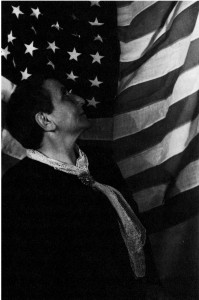
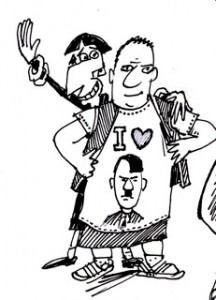
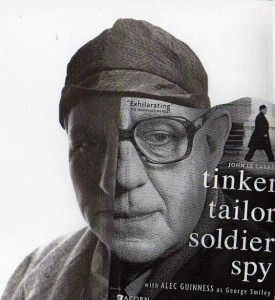
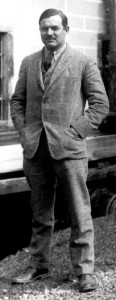
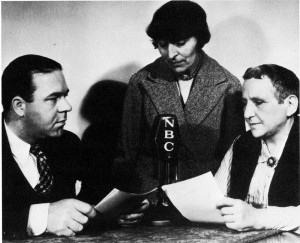
![Kennicott[1]](http://quotinggertrudestein.com/wp-content/uploads/2012/01/Kennicott1-225x300.jpg)

